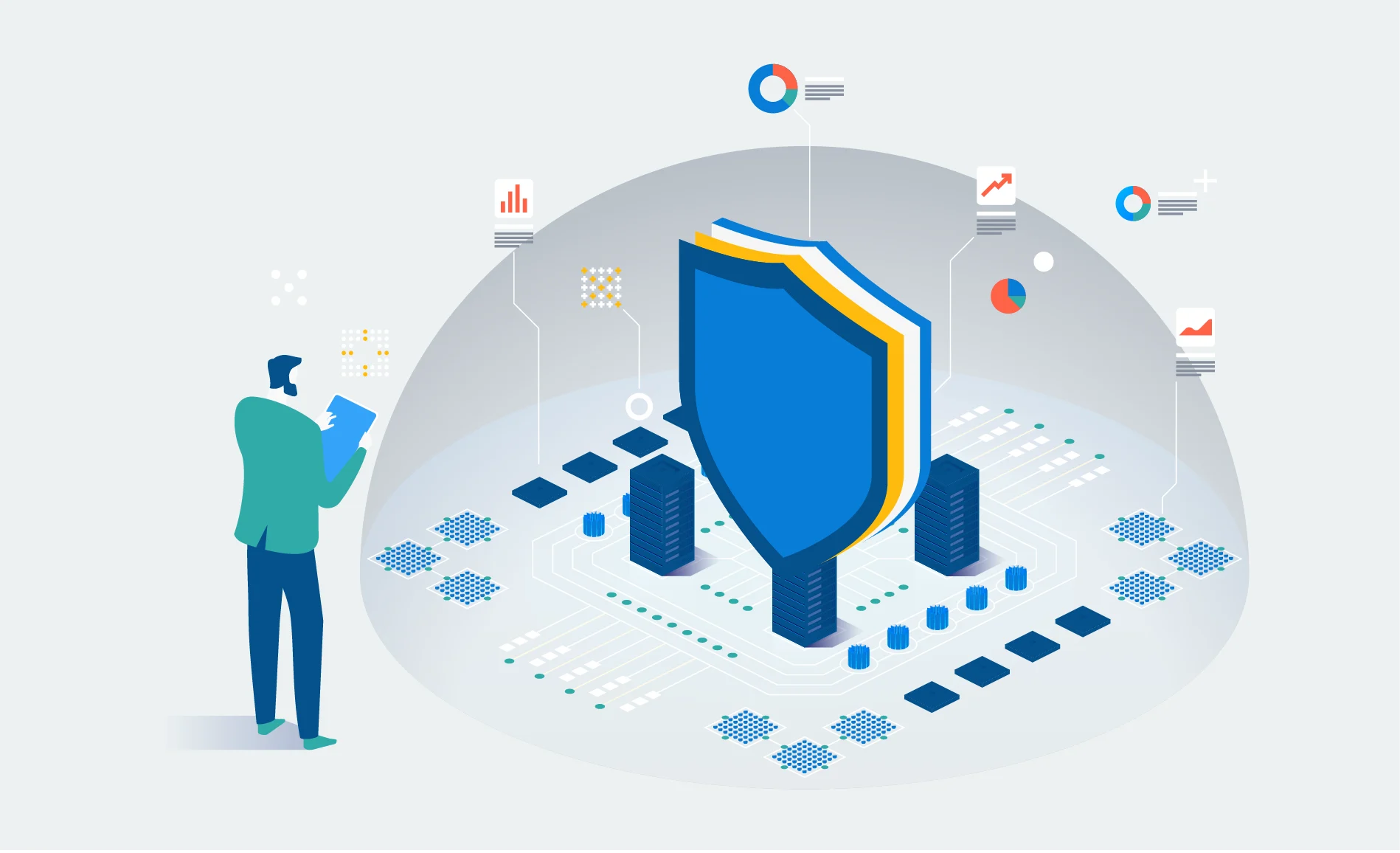Cybersecurity software plays a crucial role in protecting your digital assets from various cyber threats. With the increasing reliance on digital technology, the need for robust cybersecurity measures has become more important than ever. Cybersecurity software provides essential protection against malware, ransomware, phishing attacks, and other online security risks. It helps safeguard sensitive information, financial data, and intellectual property from unauthorized access and potential breaches, ensuring the security and integrity of your digital assets.
In today’s digital age, the security of your digital assets is a top priority. Cybersecurity software offers a range of protective measures, such as firewalls, encryption, and intrusion detection systems, to defend against evolving cyber threats. It also helps in detecting and responding to security incidents, minimizing the impact of potential breaches. By investing in cybersecurity software, you can effectively mitigate the risks of cyber attacks and ensure the continuity of your business operations. Additionally, cybersecurity software provides peace of mind, knowing that your digital assets are well-protected against unauthorized access and malicious activities.
Understanding Cybersecurity Software
Cybersecurity software refers to a set of tools and technologies designed to protect digital systems, networks, and data from cyber threats, such as malware, ransomware, phishing attacks, and unauthorized access. This type of software is essential for businesses, organizations, and individuals who want to safeguard their digital assets from potential security breaches and data theft.
Some common features of cybersecurity software include antivirus protection, firewalls, intrusion detection/prevention systems, encryption tools, and security information and event management (SIEM) solutions. These tools work together to identify, prevent, and respond to security incidents, helping to minimize the risk of cyberattacks and data breaches.
The Importance of Cybersecurity Software
Cybersecurity software is crucial in today’s digital landscape, where cyber threats are constantly evolving and becoming more sophisticated. Without adequate protection, organizations and individuals are vulnerable to data breaches, financial losses, and reputational damage. By implementing cybersecurity software, businesses can ensure the confidentiality, integrity, and availability of their sensitive information, while also demonstrating a commitment to data security and compliance with industry regulations.
Furthermore, cybersecurity software can help prevent costly downtime, legal liabilities, and the loss of customer trust that often result from successful cyberattacks. By investing in robust cybersecurity solutions, businesses can proactively mitigate cyber risks and strengthen their overall security posture.
Types of Cybersecurity Software
There are various types of cybersecurity software available to address different aspects of digital security. Antivirus software, for example, is designed to detect and remove malware from computers and networks, while firewalls act as a barrier between a trusted internal network and untrusted external networks. Additionally, encryption software helps to secure sensitive data by converting it into a code that can only be accessed with the right decryption key.
Other types of cybersecurity software include vulnerability assessment tools, which scan for and identify security weaknesses in systems and applications, as well as security information and event management (SIEM) solutions that provide real-time analysis of security alerts and events. Each type of cybersecurity software plays a critical role in protecting against specific cyber threats and vulnerabilities.
Key Features to Look For
When selecting cybersecurity software, it’s important to consider key features that align with your specific security needs and objectives. Look for solutions that offer robust antivirus and anti-malware protection, as well as proactive threat detection capabilities. Advanced firewall features, such as application control and intrusion prevention, can also enhance your defense against network-based attacks.
Additionally, encryption and data loss prevention (DLP) features are essential for safeguarding sensitive data, especially in industries with strict compliance requirements. It’s also beneficial to choose cybersecurity software with centralized management and reporting capabilities, allowing for streamlined security administration and visibility into security events across the organization.
Best Practices for Implementing Cybersecurity Software
Implementing cybersecurity software effectively involves following best practices to maximize its protective capabilities. This includes regularly updating the software to ensure it can defend against the latest threats, as well as configuring it to align with industry best practices and security standards. It’s also important to conduct regular security audits and assessments to identify and address any vulnerabilities or gaps in your cybersecurity defenses.
Furthermore, user education and awareness are key components of a strong cybersecurity strategy. Training employees on how to recognize and respond to potential security threats can help prevent social engineering attacks and minimize the risk of human error leading to a security breach. By combining cybersecurity software with comprehensive security policies and practices, organizations can create a robust defense against cyber threats.
Challenges and Limitations
While cybersecurity software is essential for protecting digital assets, it’s important to acknowledge that it’s not a silver bullet solution. One limitation is that cybersecurity software can sometimes generate false positives, flagging legitimate activities as potential threats, which can lead to unnecessary disruptions. Additionally, cybercriminals are constantly developing new tactics and techniques to evade detection, making it challenging for cybersecurity software to keep up with emerging threats.
Furthermore, the complexity and diversity of digital environments can pose challenges for implementing and managing cybersecurity software effectively. Organizations may struggle with integrating different security tools, managing multiple security vendors, and ensuring seamless protection across hybrid IT environments. Addressing these challenges requires a holistic approach to cybersecurity, encompassing people, processes, and technology.
Emerging Trends in Cybersecurity Software
As cyber threats continue to evolve, so too does cybersecurity software. One emerging trend is the adoption of artificial intelligence (AI) and machine learning capabilities in cybersecurity solutions, enabling more advanced threat detection and response. AI-powered cybersecurity tools can analyze vast amounts of data to identify patterns and anomalies indicative of potential security threats, improving the overall accuracy and efficiency of security defenses.
Another trend is the rise of cloud-based cybersecurity solutions, which offer scalable and flexible security capabilities to protect cloud workloads and applications. With the increasing adoption of cloud computing, organizations are seeking cybersecurity software that can seamlessly integrate with their cloud environments and provide consistent protection across on-premises and cloud infrastructure.
The Future of Cybersecurity Software
Looking ahead, the future of cybersecurity software will likely be shaped by continued advancements in technology and the evolving threat landscape. We can expect to see cybersecurity solutions that leverage automation and orchestration to streamline security operations and response processes, as well as enhanced integration with other IT and security tools for a more cohesive defense strategy.
Additionally, the concept of zero trust security, which assumes that no user or device should be inherently trusted, is gaining traction in cybersecurity. This approach will influence the development of cybersecurity software that focuses on continuous verification and strict access controls to prevent unauthorized access and lateral movement within networks. Overall, the future of cybersecurity software will be guided by the ongoing pursuit of adaptive, intelligent, and comprehensive security solutions.
| Software | Function |
|---|---|
| Antivirus | Detects and removes malware, viruses, and other malicious software |
| Firewall | Monitors and controls incoming and outgoing network traffic |
| Encryption Software | Secures data by converting it into a code that can only be accessed with a key |
| Security Information and Event Management (SIEM) | Collects and analyzes security data from various sources to identify and respond to threats |
Cybersecurity software plays a crucial role in protecting digital assets from various cyber threats. Antivirus software helps detect and remove malware, while firewalls monitor and control network traffic. Encryption software secures data by converting it into a code, and SIEM systems analyze security data to identify and respond to threats. By utilizing these tools, organizations can better safeguard their digital assets from cyber attacks.



